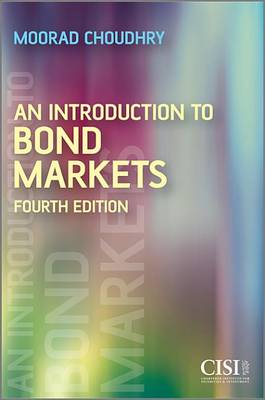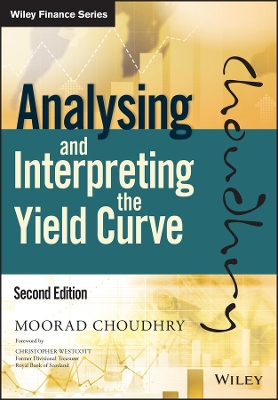The Wiley Finance
5 primary works • 9 total works
Book 18
Book 193
Securitization is still in wide use despite the reduction in transactions. The reality is that investors and institutions continue to use this vehicle for raising funds and the demand for their use will continue to rise as the world's capital needs increase.
The Mechanics of Securitization specifically analyzes and describes the process by which a bank successfully implements and closes a securitization transaction in the post subprime era. This book begins with an introduction to asset-backed securities and takes you through the historical impact of these transactions including the implications of the recent credit crisis and how the market has changed.
- Discusses, in great detail, rating agency reviews, liaising with third parties, marketing the deals, and securing investors
- Reviews due diligence and cash flow analysis techniques
- Examines credit and cash considerations as well as how to list and close deals
- Describes the process by which a bank will structure and implement the deal, and how the process is project managed and tested across internal bank departments
While securitization transactions have been taking place for over twenty-five years, there is still a lack of information on exactly how they are processed successfully. This book will put you in a better position to understand how it all happens, and show you how to effectively implement an ABS transaction yourself.
Book 576
The financial crisis of 2007-2008 has discredited business models in the banking and fund management industries. In The Future of Finance, Moorad Choudhry and Gino Landuyt argue that banks must realign their business models, implying a lower return-on-equity; diversifying their funding sources; and increasing liquidity reserves. On the investment side, the authors discuss how diversification did not reduce risk, but rather amplified it, and failed to stabilize returns. The authors conclude that the clear lesson from the crisis is to know one's risk. A lesson that is best served by concentrating on assets and sectors that you understand.
- Examines the weaknesses in the business models of many institutions, as well as the theoretical foundation for professionals in the field of finance
- Identifies the shortcomings of Modern Portfolio Theory
- Addresses how investment managers can find new strategies for creating "alpha" and why they need to re-vamp their fee structures
Filled with in-depth insights and practical advice, The Future of Finance will provide bankers and investment managers with a guide to realigning their businesses in order to prosper in the post-crisis financial markets.
Book 724
Book 741
The definitive and timeless guide to the principles of banking and finance, addressing and meeting the challenges of competition, strategy, regulation and the digital age.
Moorad Choudhry Anthology compiles the best of renowned author Professor Moorad Choudhry's incisive writings on financial markets and bank risk management, together with new material that reflects the legislative changes in the post-crisis world of finance and the impact of digitization and global competition. Covering the developments and principles of banking from the 1950s to today, this unique book outlines the author's recommended best practices in all aspects of bank strategy, governance and risk management, including asset-liability management, liquidity risk management, capital planning, Treasury risk, and corporate framework, and describes a "vision of the future" with respect to a sustainable bank business model. You will gain the insight of a global authority on topics essential to retail, corporate, and investment/wholesale banking, including strategy, risk appetite, funding policies, regulatory requirements, valuation, and much more. The companion website is a goldmine for senior practitioners that provides templates that can applied in virtually any bank, including policy documents, pricing models, committee terms of reference, teaching aids and learning tools including PowerPoint slides and spreadsheet models. These facilitate a deeper understanding of the subject and the requirements of the senior executive, making this book an ideal companion for practitioners, graduate students and professional students alike.
The intense demand for knowledge and expertise in asset-liability management, liquidity, and capital management has been driven by the regulatory challenges of Basel III, the European Union's CRDIV, the Volcker Rule, Dodd-Frank Act, and a myriad of other new regulations. This book meets that need by providing you with a complete background and modern insight on every aspect of bank risk management.
- Re-engage with timeless principles of finance that apply in every market and which are the drivers of principles of risk management
- Learn strategic asset liability management practices that suit today's economic environment
- Adopt new best practices for liquidity models and choosing the appropriate liquidity risk management framework
- Examine optimum capital and funding model recommendations for corporate, retail, and investment/wholesale banks
- Dig deeper into derivatives risk management, balance sheet capital management, funding policy, and more
- Apply best-practice corporate governance frameworks that ensure a perpetual and viable robust balance sheet
- Adopt strategy formulation principles that reflect the long-term imperative of the banking business
In the 21st century more than ever banks need to "re-learn" traditional risk management principles and apply them every day. Every bank in the world needs to be up to speed on these issues, and Anthology from Professor Moorad Choudhry is the answer to this new global policy response.
It also offers readers access to an accompanying website holding policy templates and teaching aids.
* Illustrates how unsound banking practices that were evident in previous bank crashes were repeated during the creation of the 2007-2008 financial market crisis * Provides a template that can be used to create a sound liquidity and asset-liability management framework at any bank * An essential resource for the international banking community as it seeks to re-establish its credibility, as well as for students of finance * Explains the original principles of banking, including sound lending policy and liquidity management, and why these need to be restated in order to avoid another bank crisis at the time of the next economic recession * Covers topics of particular importance to students and academia, many of which are marginally if ever addressed in current text books on finance * Offers readers access to a companion website featuring invaluable learning and teaching aids Written by a banking practitioner with extensive professional and teaching experience in the field, The Principles of Banking explains exactly how to get back to basics in risk management in the banking community, essential if we are to maintain a sustainable banking industry. engaging and interesting and, more importantly, easily understood, allowing a clear picture to emerge of how the principle or concept under discussion is to be applied in the real world.
- Graeme Wolvaardt, Head of Market & Liquidity Risk Control, Europe Arab Bank Plc
Understand and interpret the global debt capital markets
Now in a completely updated and expanded edition, this is a technical guide to the yield curve, a key indicator of the global capital markets and the understanding and accurate prediction of which is critical to all market participants. Being able to accurately and timely predict the shape and direction of the curve permits practitioners to consistently outperform the market.
Analysing and Interpreting the Yield Curve, 2nd Edition describes what the yield curve is, explains what it tells participants, outlines the significance of certain shapes that the curve assumes and, most importantly, demonstrates what factors drive it and how it is modelled and used.
- Covers the FTP curve, the multi-currency curve, CSA, OIS-Libor and 3-curve models
- Gets you up to speed on the secured curve
- Describes application of theoretical versus market curve relative value trading
- Explains the concept of the risk-free rate
- Accessible demonstration of curve interpolation best-practice using cubic spline, Nelson-Siegel and Svensson 94 models
This advanced text is essential reading for traders, asset managers, bankers and financial analysts, as well as graduate students in banking and finance.






